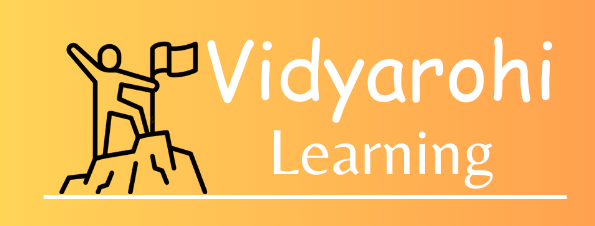CBSE 12th Chemistry Assertion and Reason Questions: Assertion and Reason type questions in CBSE Class 12 Chemistry have become an important part of the board exam. Now CBSE is more focused on application-based and reasoning-oriented learning instead of rote memorisation. Assertion and Reason type are designed to test how well students understand concepts, apply them, and use logical reasoning. Instead of just memorising facts, students need to analyse whether the given Assertion is correct and if the Reason provided explains it properly. This type of assessment helps students think deeply, analyse information, and improve problem-solving skills. Practising these questions regularly helps in improving accuracy, speed, and confidence. They also prepare students for competitive exams like JEE and NEET, where such application-based questions are common. In this article, we have provided CBSE 12th Chemistry Assertion and Reason Questions with Answers to help students strengthen their preparation and score better in exams.
Also check,
| CBSE 12th Biology Assertion and Reason Questions with Answers, Important Questions for Board Exam |
|
How to Get More Than 90% Marks in CBSE 12 Board Exam, Subject-wise Study Plan & Preparation Strategy |
What are CBSE Class 12 Chemistry Assertion and Reason Questions 2026?
CBSE Class 12 Chemistry Assertion and Reason questions go beyond textbook theory and memorised concepts. They are designed to test students’ understanding, critical thinking, and application skills. These types of questions have now become an important part of the exam pattern. They test not only students’ knowledge of facts but also their ability to understand relationships between concepts and apply logical reasoning.
Class 12 Chemistry Assertion and Reason questions are designed to test a student’s ability to:
- Apply concepts of Chemistry, Chemical reactions, and principles to explain given statements.
- Evaluate whether the given Reason correctly explains the Assertion.
- Analyse relationships between concepts rather than simply recalling facts.
- Use critical thinking and logical reasoning to determine the truth or falsity of both statements.
Also check,
CBSE Class 12 Chemistry Assertion and Reason Question Format
According to the CBSE Class 12 Chemistry Paper Pattern 2026, the paper includes:
- 4 Assertion and Reason-based questions, carrying 1 mark each.
- In Section A of the question paper
- In Assertion & Reason questions, there are two statements given:
Assertion (A): A statement presented as a fact. It may be true or false.
Reason (R): A supporting statement which may or may not correctly explain the Assertion. It can also be true or false.
Mainly, the students need to identify:
(a) Both assertion and reason are true, and the reason is the correct explanation of the assertion.
(b) Both assertion and reason are true, but the reason is not the correct explanation of the assertion.
(c) Assertion is true, but reason is false.
(d) Assertion is false, but reason is true.
These questions require students to understand the “why” behind every concept and solve accordingly.
Tips to Solve Chemistry Assertion and Reason Questions Effectively
To solve CBSE Class 12 Chemistry Assertion and Reason Questions effectively, first read the question carefully and understand both the statements given. Break the question into small parts and check the Assertion and Reason separately to see whether each is true or false, and whether the Reason statement explains the Assertion or not. Practise similar questions regularly to improve speed and accuracy. Here are some expert tips for solving Class 12 Chemistry Assertion and Reason questions effectively:
1. Read Both Statements Carefully: Understand the meaning of the Assertion and the Reason separately before comparing them.
2. Check the Truth of Each Statement: First, decide if the Assertion is true or false, then check the Reason independently.
3. Find the Relationship: If both are true, see whether the Reason correctly explains the Assertion (cause-and-effect).
4. Eliminate Wrong Options: If confused, rule out obviously incorrect choices to narrow down the answer.
5. Practice from Sample Papers and Past Year Papers: Use the CBSE Sample Paper 2025 and previous years’ board papers to practice similar case-based questions.
Also check,
CBSE Class 12 Chemistry Assertion and Reason Question
Let’s look at an example to understand how these questions appear:
Two statements are given- one labelled Assertion (A) and the other labelled Reason (R). Which of the following options is correct for the given statements?
Q. No.1: Assertion (A): Halogens are o, p-directing in electrophilic aromatic substitution reactions.
Reason (R): Usually, para product predominates in an electrophilic substitution reaction.
(a) Both A and R are true, and R is the correct explanation of the assertion.
(b) Both A and R are true, and R is not the correct explanation of the assertion.
(c) A is true, but R is false.
(d) A is false, but R is true.
Answer: (b) Both A and R are true, and R is not the correct explanation of the assertion.
Q. No.2: Assertion (A): In Haber's process for the manufacture of ammonia, molybdenum acts as a promoter for iron.
Reason (R): Promoters are substances that enhance the activity of a catalyst.
(a) Both A and R are true, and R is the correct explanation of the assertion.
(b) Both A and R are true, and R is not the correct explanation of the assertion.
(c) A is true, but R is false.
(d) A is false, but R is true.
Answer: (a) Both A and R are true, and R is the correct explanation of the assertion.
Q. No.3: Assertion (A): F— F bond in F2 molecule is weak.
Reason (R): The F atom is small in size, which leads to large electron-electron repulsions.
(a) Both A and R are true, and R is the correct explanation of the assertion.
(b) Both A and R are true, and R is not the correct explanation of the assertion.
(c) A is true, but R is false.
(d) A is false, but R is true.
Answer: (a) Both A and R are true, and R is the correct explanation of the assertion.
Q. No. 4: Assertion (A): Molarity of a solution in the liquid state changes with temperature.
Reason (R): The volume of a solution changes with a change in temperature.
(a) Both A and R are true, and R is the correct explanation of the assertion.
(b) Both A and R are true, and R is not the correct explanation of the assertion.
(c) A is true, but R is false.
(d) A is false, but R is true.
Answer: (a) Both A and R are true, and R is the correct explanation of the assertion.
Q. No. 5: Assertion (A): Alcohol and phenol can be distinguished by sodium hydroxide.
Reason (R): Phenol is acidic, while alcohol is neutral.
(a) Both A and R are true, and R is the correct explanation of the assertion.
(b) Both A and R are true, and R is not the correct explanation of the assertion.
(c) A is true, but R is false.
(d) A is false, but R is true.
Answer: (a) Both A and R are true, and R is the correct explanation of the assertion.
Q. No. 6: Assertion (A): All amino acids exist as zwitter ions in aqueous solutions.
Reason (R): Amino acids have both -NH2(basic) and -COOH(acidic) groups.
(a) Both A and R are true, and R is the correct explanation of the assertion.
(b) Both A and R are true, and R is not the correct explanation of the assertion.
(c) A is true, but R is false.
(d) A is false, but R is true.
Answer: (a) Both A and R are true, and R is the correct explanation of the assertion.
Q .No. 7: Assertion: Benzyl bromide, when kept in acetone and water, produces benzyl alcohol.
Reason: The reaction follows SN2 mechanism.
(a) Both A and R are true, and R is the correct explanation of the assertion.
(b) Both A and R are true, and R is not the correct explanation of the assertion.
(c) A is true, but R is false.
(d) A is false, but R is true.
Answer: (c) A is true, but R is false.
Q. No. 8: Assertion (A): The boiling points of alkyl halides decrease in the order: RI> RBr> RCl > RF.
Reason (R): Fluorine is the most electronegative atom.
(a) Both A and R are true, and R is the correct explanation of the assertion.
(b) Both A and R are true, and R is not the correct explanation of the assertion.
(c) A is true, but R is false.
(d) A is false, but R is true.
Answer: (b) Both A and R are true, and R is not the correct explanation of the assertion.
Q. No. 9: Assertion (A): Molality is regarded as a better criterion for measurement of concentration.
Reason (B): Molality is independent of temperature.
(a) Both A and R are true, and R is the correct explanation of the assertion.
(b) Both A and R are true, and R is not the correct explanation of the assertion.
(c) A is true, but R is false.
(d) A is false, but R is true.
Answer: (a) Both A and R are true, and R is the correct explanation of the assertion.
Q. No. 10: Assertion (A): Glycine should be taken through diet.
Reason (R): Glycine is a non-essential amino acid.
(a) Both A and R are true, and R is the correct explanation of the assertion.
(b) Both A and R are true, and R is not the correct explanation of the assertion.
(c) A is true, but R is false.
(d) A is false, but R is true.
Answer: (d) A is false, but R is true.
CBSE Class 12 Chemistry Assertion and Reason Question PDF [Free]
Click on the link provided below to download the CBSE Class 12 Chemistry Assertion and Reason Question PDF with answers for free without any login. Get the direct link to download the PDF.
| CBSE Class 12 Chemistry Assertion and Reason Question PDF | Download here |
| CBSE Class 12 Chemistry Assertion and Reason Question- Solution PDF | Download here |
Common Mistakes to Avoid In Chemistry Assertion and Reason Questions
Many students lose marks in Chemistry Assertion and Reason questions because of small but avoidable mistakes. Knowing these mistakes in advance can help you approach such questions with more confidence and accuracy.
- Not reading both statements carefully: Skipping keywords like “always,” “never,” or “only” can change the meaning of the question.
- Assuming the Reason is correct without checking: Always verify both statements independently first.
- Confusing correlation with cause: Just because both statements are true doesn’t mean the Reason explains the Assertion.
- Relying on memorisation only: These questions test understanding; revise concepts and applications instead of rote learning.
- Not practising enough: Lack of practice with previous year and sample papers reduces speed and accuracy.
- Lack of practice: These questions are relatively new, and many students aren’t used to them yet.
CBSE Class 12 Chemistry Syllabus 2025-26
The Central Board of Secondary Education (CBSE) has released the Chemistry Syllabus for Class 12 Science streams for the 2025-26 academic year. This Chemistry Syllabus outlines the course structure, chapters, and topics that students will need to study in the subject. The CBSE Class 12 Chemistry syllabus covers a wide range of topics, including Electrostatics, Current Electricity, Magnetic Effects of Current and Magnetism, Electromagnetic Induction and Alternating Currents, Electromagnetic Waves, Optics, Dual Nature of Radiation and Matter, Atoms and Nuclei, and Electronic Devices. It is divided into units with specific weightage, helping students plan their preparation effectively. The unit-wise chapters and weightage are provided below:
| Unit Name | Marks |
| Solutions | 7 |
| Electrochemistry | 9 |
| Chemical Kinetics | 7 |
| d and f -Block Elements | 7 |
| Coordination Compounds | 7 |
| Haloalkanes and Haloarenes | 6 |
| Alcohols, Phenols and Ethers | 6 |
| Aldehydes, Ketones and Carboxylic Acids | 8 |
| Amines | 6 |
| Biomolecules | 7 |
| Total | 70 |
Check the latest and detailed CBSE Class 12 Chemistry Syllabus 2025-26; Check Latest Unit-wise Weightage, Download PDF
CBSE Class 12 Chemistry Exam Pattern 2025-26
CBSE has released the exam pattern and marking scheme for the 2025-26 academic year. Based on the official question paper design shared along with the syllabus, the board will follow the same exam pattern and marking scheme as in 2024-25. The CBSE Class 12 Chemistry board exam for 2025-26 will consist of a theory paper of 70 marks, and 30 marks are assigned to the practical exam. The question paper was divided into five different sections:
| Section | Question Type | Number of Questions | Marks |
| A | Multiple Choice Questions & Assertion and Reason Questions (1 mark) | 16 | 16 |
| B | Very Short Answer (2 mark) | 5 | 10 |
| C | Short Answer (3 marks) | 7 | 21 |
| D | Case Study-Based Questions (4 marks) | 2 | 8 |
| E | Long Answer (5 marks) | 3 | 15 |
| Total | 33 | 80 | |
Check the latest and detailed CBSE Class 12th Chemistry Exam Pattern 2025-26 with Marking Scheme.


